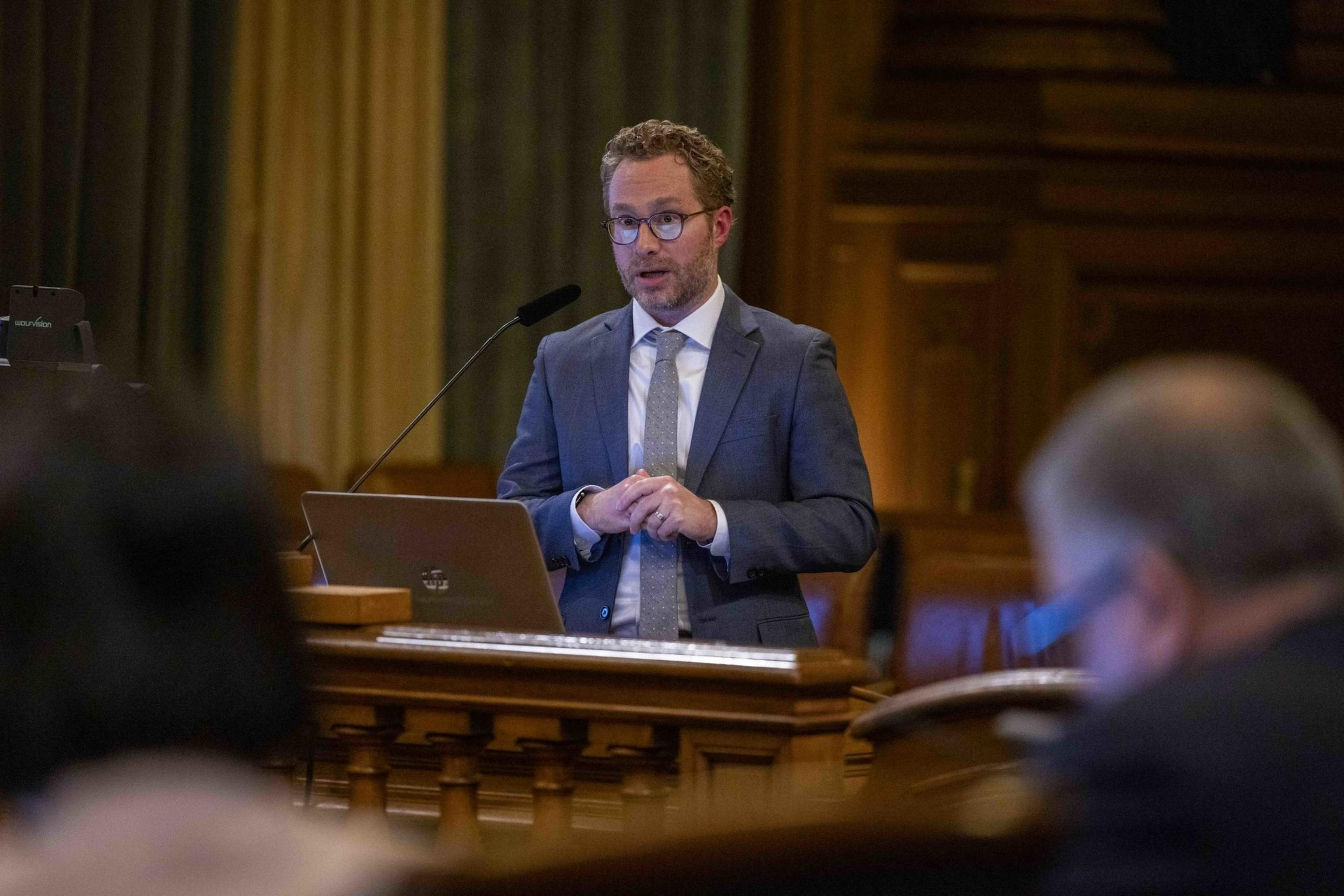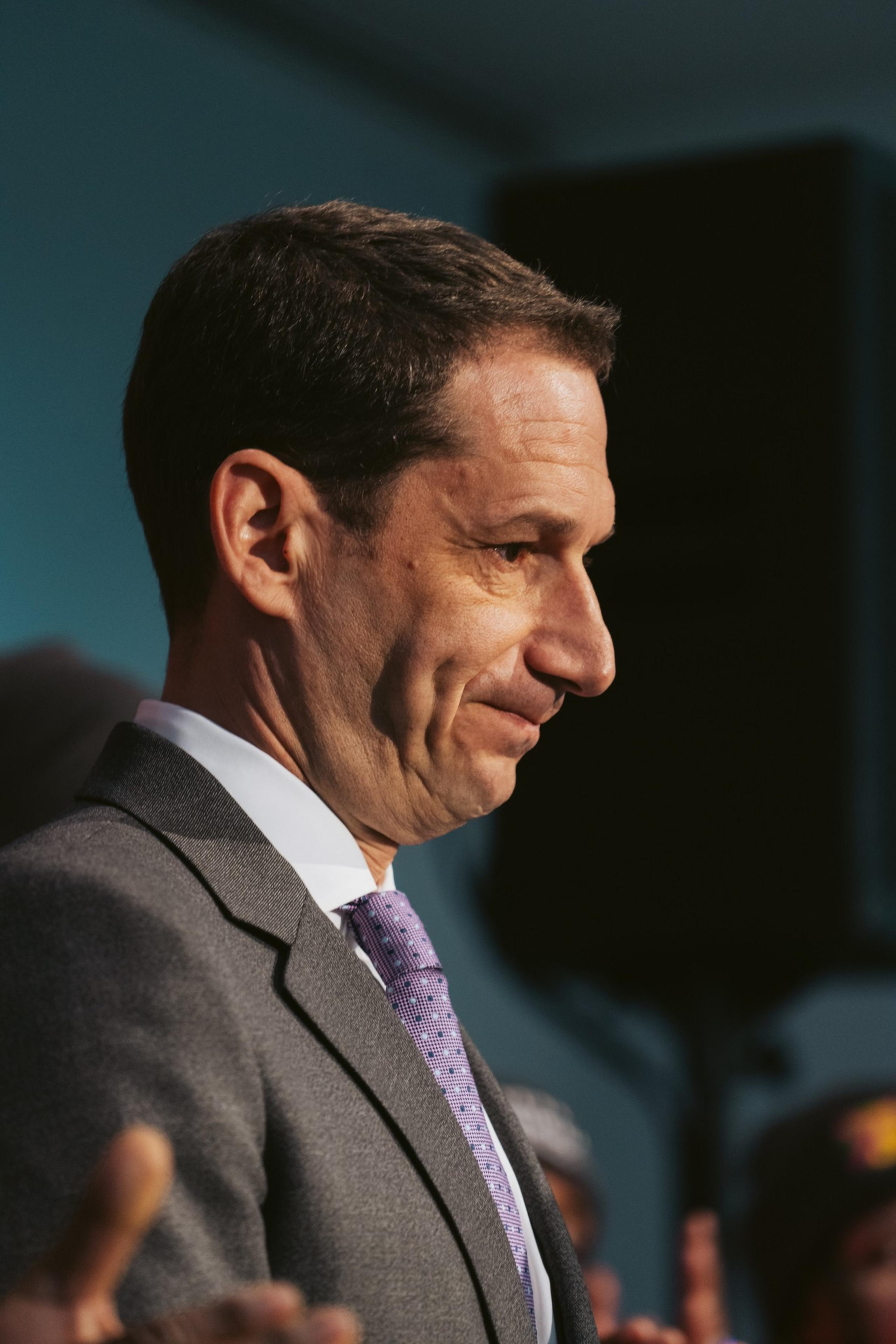Layoffs — they’re not just for the tech industry anymore.
For the first time in more than a decade, the San Francisco government may hand out pink slips to address a fiscal crisis.
Mayor Daniel Lurie’s office signaled the possibility publicly during a Board of Supervisors budget committee hearing Wednesday. This follows his order of a partial hiring freeze when he first took office to begin addressing the city’s $876 million budget deficit.
Closing budget gaps has become an even tougher task under President Donald Trump, who has threatened to yank federal funding from sanctuary cities.

Layoffs of city workers would write Lurie’s first year in office into local history books. Gavin Newsom was the last mayor to conduct widespread layoffs over structural budget deficits; he concocted an agreement with labor unions to give 15,000 city workers the boot (opens in new tab), only to hire them back with shorter workweeks, saving $50 million.
Kim Tavaglione — executive director of the San Francisco Labor Council, a group whose member unions represent most of the city’s 35,000 workers — said layoffs would have repercussions.
“It’s not like the relationship will end if we come up with conflict around the budget. It doesn’t work that way,” Tavaglione said, noting that the council will work with any sitting mayor. “But we do have pretty good memories.”
Possible layoffs were teed up by former Mayor London Breed, but the Lurie administration is tacking in the same direction. During the budget committee hearing, Benjamin McCloskey, the mayor’s interim budget director, outlined the city’s grim fiscal future.
The mayor’s office instructed departments that “layoffs are not preferred, but if absolutely necessary for a department to meet its target, to please identify them,” McCloskey told the supervisors.
While San Francisco’s private sector is no stranger to layoffs — including a particularly brutal 2024 for the tech industry — the city has been “really lucky” to rarely need to cut staffers, said Ed Harrington, a former city controller, a role central to San Francisco’s budgeting.
Often, the city has allowed employees with seniority to “bump,” or transfer, into positions in departments that are doing well financially, in lieu of downsizing. But San Francisco’s fiscal realities may be so dire that such transfers aren’t possible, Harrington said.

The city last laid off more than 100 permanent employees under Newsom’s watch, amid the Great Recession: 772 layoffs in the fiscal year 2008, 962 in 2009, and 218 in 2010, according to data provided by the Department of Human Resources. Harrington said raising the possibility of layoffs might bring labor to the table to find creative solutions to lessen the blow, like the one Newsom deployed in 2010 (opens in new tab).
“If you’re talking about things being so serious that you’re contemplating layoffs, everyone begins to view the world differently,” Harrington said.
Creativity may be needed. McCloskey said San Francisco’s finances aren’t improving at pace: Office vacancies remain high, and the hospitality industry is recovering slower than hoped, leading the city to revise its revenue projections downward.
The upshot? The city’s last look into its budgetary crystal ball was too optimistic, and now it’s short hundreds of millions of dollars.
There are even more looming threats: Trump is threatening to axe federal funding to cities, including hundreds of millions of dollars in Federal Emergency Management Agency money owed to San Francisco. A U.S. District Court judge temporarily froze that order (opens in new tab), but it may still move forward. Whether or not FEMA will reimburse more than $234 million is a budget “risk,” budget documents noted.
“I don’t need to tell anyone in this room that there’s a lot of uncertainty on the federal level,” McCloskey said.
